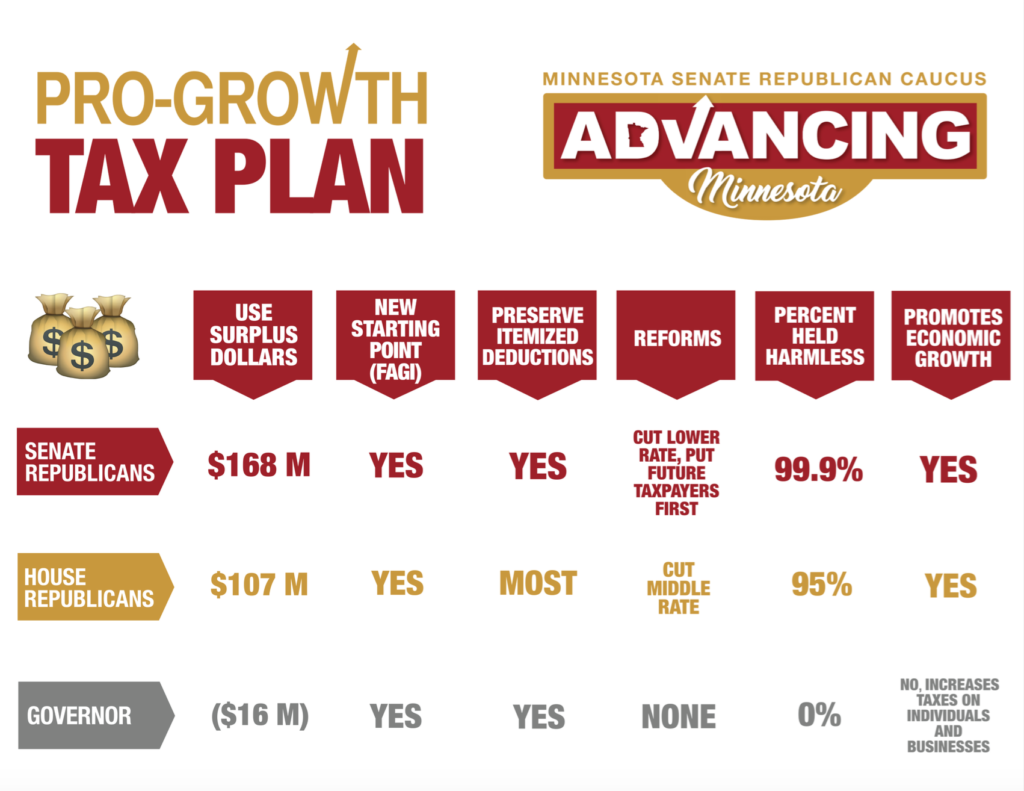Senate Republicans rolled out a tax plan on Tuesday that will cut state income taxes for 82% of working families and prevent a tax increase for everyone else. The plan will drop the lowest income tax rate by a quarter of a percent and allow Minnesotans to keep popular deductions for mortgage interest, property taxes, and charitable donations. In total, 2.1 million Minnesota households will keep more of their pay as a result of the state changes.
“The new federal tax system rewards the vast majority of working families with lower tax rates, and this plan allows them to keep more of their hard-earned money at the state level, too,” said Senate Majority Leader Paul Gazelka (R-Nisswa). “This is the only tax plan that protects the wages of 99.9% of Minnesota taxpayers, and 82% of families will actually receive a tax break.”
The bill also includes a major reform designed to protect future taxpayers from sending too much of their paychecks to St. Paul. When the November forecast projects a significant surplus, individual income tax rates will be automatically reduced one-tenth of one percent beginning in the next calendar year. If a healthy budget surplus continues in subsequent years, reductions could build each year until rates have been reduced by one percentage point.
“This tax bill is a bridge to larger reforms in the future,” said Sen. Roger Chamberlain (R-Lino Lakes). “Minnesota’s economic survival depends on our ability to treat working families fairly, prioritize economic growth, and creatively solve future challenges in the budget. Our work is not done here, but this is a good start.”
Tax plan highlights:
- Drops the bottom tax rate a quarter of a percent, from 5.35% to 5.1%, beginning in tax year 2018.
- Preserves the state personal and dependent exemption of $4,150, as well as the state standard deduction of $13,000.
- Protects popular deductions for mortgage interest, state and local taxes, home equity loan interest, and charitable donations.
- Extends the $5 million angel investor tax credit to help tech-focused startups.
- Encourages Main Street business and agriculture investment by conforming fully to Section 179 of the IRS tax code, allowing an immediate deduction of the entire cost of equipment.
- Gives Minnesotans more control over our tax code by separating the state tax code from the federal tax code – also known as the FAGI model.
Unlike Governor Dayton’s plan, the Senate Republican proposal does not reinstate the sick tax on health care services, which the Department of Revenue called “regressive” after estimating it will increase taxes on Minnesotans at every income decile.

